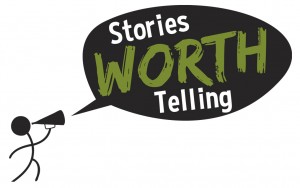by Julie Dixon
In our research, we paid particular attention to the nonprofit website as a tool for sharing stories. This was no accident—according to the 2014 Nonprofit Communications Trends report, the website was the most important communications channel to the more than 2,100 nonprofits surveyed. Not utilizing it as a key channel in your storytelling strategy is a tremendous missed opportunity.
A close observation of how stories are presented on the 157 websites we assessed revealed several insights:
- Ease of access is important. Stories should be present on the homepage, with clear links to where you can find more. Only a third of the nonprofit websites assessed had stories on their homepages.
- Stories can (and should) be integrated into other pages on the website. Most common among the websites we assessed were placing stories on a separate page or tab (21%) and integrating them into program pages (15%).
- Presentation can make or break a story. Even the most compelling content will suffer if it’s hard to find, not an optimal size, or not alongside an easy way to take action.
- Web users today want to be able to engage with the content—but few websites give them the opportunity to do this. Only 20 percent of the websites we assessed had “share this” or equivalent functions built into their pages to allow people to share, comment or interact with the content, and only six websites allowed people to submit their own stories.
- Mobile stories are a must. As more and more users access websites on their mobile devices, having a mobile-optimized site—or at least a site in which stories still appear front and center when looking at it on a mobile device—is crucial.
So what does a story-optimized homepage look like? We developed this mockup as an extreme example of all the ways in which stories can be incorporated into a homepage. You’ll notice:
- Large multimedia stories front and center
- A clearly labeled tab to direct users to more stories
- Stories that can be shared with the click of a button
- Clear calls-to-action alongside the stories
- A newsletter sign-up box that informs users they’ll receive more stories by signing up (thus setting expectations around future content)
While a nonprofit homepage doesn’t need to incorporate all of these elements, adding just a few of them will make your site more story friendly.
We’re eager to share more of our storytelling findings and tips with the nonprofit community in early September!


